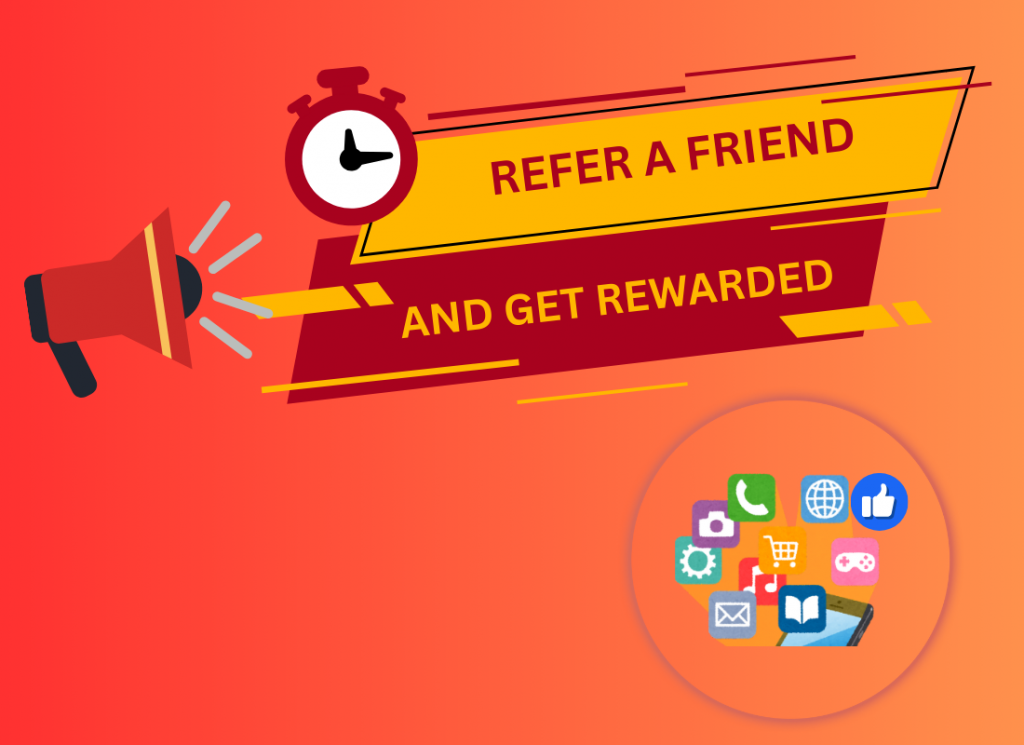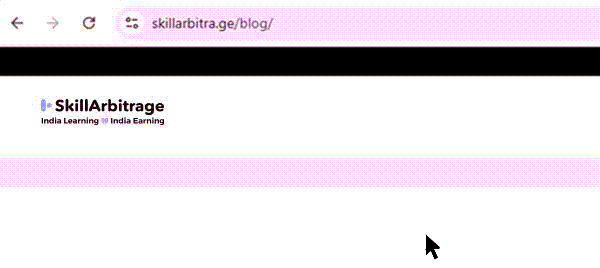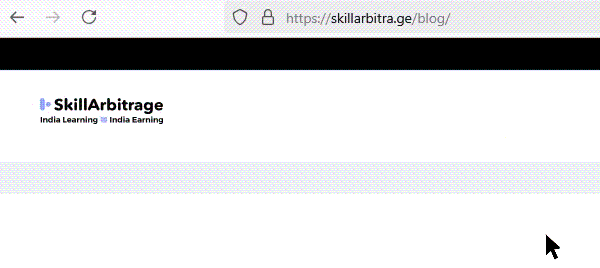This blog will explain exactly how business owners can run referral campaigns that actually bring new customers and drive sales.
Table of Contents
Introduction
Have you ever launched a referral campaign thinking it would flood you with a lot of customers, but in reality, barely anyone referred, and very few people bought something? You are not alone.
Most businesses think, “Let me just give a discount or cash reward, and people will start referring.” What happens? Very few referrals come in, and most of them don’t even convert.
These businesses don’t understand that referral marketing is not just about the reward. It’s actually about understanding why people refer in the first place.
It is true that people are four times more likely to buy when referred by a friend. But that only happens when your referral campaign gives them a genuine reason to talk about your product and also makes it super easy for them to do it.
If your product is not impressive,
If the reward doesn’t feel exciting,
If the process is even slightly confusing,
People would simply not refer, even if they like you.
That is why most businesses fail in referral marketing, which is one of the best ways to get sales. Why the best? Because you won’t need to spend money on marketing or ads.
So in this blog, I am going to reveal the truth to you on how you can build a referral campaign that brings you not only leads but real sales. But first, let’s start by understanding why most referral campaigns fail.
Why do most referral campaigns fail?
Referral marketing is powerful, but only when it’s done right. There is a reason why most referral campaigns fail, and it’s simple – most businesses don’t actually understand why people refer others in the first place.
They think if they offer a discount/cashback and build a “Refer & Earn” section, then customers will magically start referring. It doesn’t work like that. If only it had been that easy.
You need to know exactly why a referral campaign fails and exactly how to build it so that it explodes with customers. So, first let’s start with the 5 most common reasons why referral campaigns fail:
- The incentive isn’t worth it
Most businesses offer rewards that don’t really make customers excited enough to feel like referring. They think a 5% discount or a Rs 50 cashback will do the job.
But that’s not true because nobody would go out of their way to refer someone for just a tiny discount. The solution isn’t to give large rewards, but one that excites them.
Don’t worry, you will learn how to do it later on. Until then, look at this example for a better understanding:
Let’s say a food delivery app offers ₹25 per referral. Would you go out of your way and ask your friends to join for just ₹25? Probably not. The reward sounds more like a rounding error than a real incentive.
- The process feels like work
If referring to someone will take a lot of effort, people won’t do it. Businesses make their referral process involve so many steps, confusing links, and delayed rewards that people just give up. The more complicated it feels, the fewer people act on it.
For example: Suppose a SaaS tool offers a referral program, but you have to log in, find a hidden “referral” tab, fill out a long form, and then wait until your friend signs up and buys so that you can get your reward. This feels like a job, not a referral.
- It attracts the wrong kind of people
What most businesses do with their referral program is that they offer the reward even if they just join, and not purchase. These kinds of programs attract people who are only there for the free stuff.
These people don’t care about the product, instead, they just care about the reward. This is why the people who will join will not be serious and will not be interested. Hence, they won’t convert, and you waste your money.
For example: Suppose an online course platform offers Rs 100 per referral even if the new user doesn’t buy anything. This online course platform will end up with users who spam the link everywhere and bring in leads that never buy.
- Nobody knows it exists
Some businesses build a referral program, send a notification to their current users, and that’s it. Now it’s buried somewhere in the website and maybe gets mentioned once in a welcome email.
How would customers participate if they don’t even know it exists? Even your most loyal users won’t refer if they don’t see it at the right time and place. No visibility means no action. Simple as that.
Example: Suppose you have an e-commerce brand, and you launched your referral program. You kept it in the website footer. Will people participate? No, because most people don’t scroll through websites so far.
- The timing is bad
No matter how great your referral campaign is, if you send it at the wrong time, it’s destined to fail. If you ask too early, users won’t trust your product enough to share it. And if you ask too late, the excitement is already gone, so they don’t care.
Businesses need to spot the small window when people are happy, engaged, and willing to refer. But most businesses miss that window and then complain about why their campaigns are not performing well, even though they’re superb.
Example: Suppose a subscription box brand sends a referral email two months after someone joins. By that time, the user might not even remember what was in the first box, so they won’t feel like sharing it.
I hope these mistakes made you realize there’s a reason why most referral campaigns fail. They all make the same mistake without realizing the psychology behind why people share.
Now, the question that might be coming into your head must be if it’s really that important. Well, let me show you some real-world examples of brands that took advantage of correct referral marketing and how it changed everything for them.
Real-world success stories of referral campaigns
Almost all of the top brands you know take advantage of referral campaigns. Below I am going to show you multiple real-world examples where each story will show you how a well-executed referral program can turn customers into a powerful marketing engine.
- PayPal – 100M+ users through referrals
If you don’t know yet about PayPal, it’s a $69 billion company that started in 1998 for digital payments. What they did was they started paying people $10 to sign up and another $10 every time they referred others.
Result? This made their user base grow by 7-10% every day. Yes, you heard it right. Not 7-10% a week or a month, but EVERY DAY. This boosted their valuation to $500 million in just 15 months.
This is how this multi-billion dollar company tasted its first success, going to 100M+ users through referral incentives. Do you understand how powerful referral marketing could be if done right? Not yet? Let me tell you another story.
- Dropbox – 100k to 4 million users through referrals
You know Dropbox, right? The cloud storage service company is currently worth $7 billion. But here’s what you don’t know – referral marketing is what made them go viral for the first time.
In 2009, they launched a referral program where users got 500 MB of free space for every friend they referred. The friend also got 500 MB. They did not offer any cash incentives.
And what happened? Their user base exploded by 3900%, growing from 100,000 to 4 million users in just 15 months. At one point, 35% of all daily signups were coming purely through referrals.
Now, imagine how much they would’ve had to spend on ads to achieve that kind of growth without referrals. Now, imagine this happening with your business. You launch a referral campaign, and the next day, you don’t know how to manage so much growth.
- Tesla – 25% of total sales coming from referrals
Now, this one was something wild. Tesla ran a referral program where referrers could win rewards like free Supercharging, VIP invites, and even a free Tesla Roadster worth ₹2 crore+.
It worked. In one quarter alone, they started getting 25% of their total sales from referrals. One referrer even brought them Rs 130 crores worth of sales, hence winning a free Roadster in return.
What you need to understand is that, if you do it right, referral marketing can go a long way for you. There is a reason why most big brands you know, even after becoming so big, still use referral campaigns.
I believe you are now super excited to implement a successful referral campaign for your own business. So, without wasting your time, let’s start.
A step-by-step method to create referral campaigns that actually bring sales
Now that you understand why most referral campaigns fail, and you’ve seen how successful ones changed the game like Dropbox, Tesla, and PayPal, I want you to imagine this:
Your customer just bought your product. They loved it. Now, instead of you spending thousands on ads to find your next customer, this same happy customer shares your product with their friend, who ends up buying from you.
This is the power of a well-structured referral campaign. It turns your best customers into your salespeople. And they don’t even feel like they’re selling.
But for this to actually work, you cannot just copy what others are doing. You need to build your referral system step by step, based on your own product, customers, and goals.
Let me now show you how to do it. Starting with the most important part that most businesses skip, which is understanding if your product is even worth referring to.
Step 1: Make sure your product is worth referring
Before you start thinking about running a referral campaign, ask yourself one question: “Would someone confidently recommend this product to a friend without being paid to do it?”
That’s because referral marketing will only work when people genuinely like your product. You can offer the biggest rewards in the world, but if your product is average or frustrating, people won’t refer it to their friends and end up risking their reputation.
No person wants to be the person who referred their friend to something that disappointed them. Referrals are built on trust, so your product needs to be exciting else it will not get traction and at the same time also spoil your brand.
But how to check if your product is referral-ready or not?
- Simply start by looking at your website testimonials, reviews on marketplaces, social media comments, or even DMs.
If people are saying good things about you and sharing positive experiences, it’s a good sign. Just make sure they did it themselves without you needing to ask them for it.
- Check your repeat purchase rate. If it is high, it means customers truly enjoy your product. That also means they are much more likely to tell their friends about it, especially when there is a reward involved
- Now, finally, talk to your most loyal customers, like those who bought more than once from you or left positive feedback. Reach out to them directly and ask –
“Would you feel confident referring this to a friend? Is there anything that would hold you back from doing that?”
Their answer is going to be gold for you because you can work accordingly and fix whatever issues you have before they stop your referral campaign from taking off.
If, after going through all these three methods, you see positive signs, then that means you can move over to the next step because your product is referral-ready. Now you can start planning your referral campaign by first deciding the incentives you can provide.
But if you failed in the above methods, it’s still not a problem because you can fix whatever’s not working, whether it’s product quality, support experience, or even the overall value you’re offering. It’ll also fix fundamental problems in your business, so there’s no downside to it.
Step 2: Choose the right incentives
Ok, so your product is referral-worthy, and a few of your loyal customers always recommend you to their friends for free. But that process is slow. Why? Because they do it when they feel like doing it, and some of them don’t even do it, even if they love your products.
But what can you do about it? You can offer them a reason to refer, which is an incentive that they would truly love to receive. These incentives are going to be the engine of your referral campaign.
Getting it right could turn your customers into your best-performing sales team. And getting it wrong could make your whole campaign fall flat. So, here are four kinds of incentives you can choose from, and which one will be suitable for you:
- Cash or discounts
If you have an audience that is very value-driven or price sensitive, then giving cash or discounts as an incentive is going to give them the highest level of motivation to refer.
Example: “Refer a friend and get $10, while your friend gets 25% off on their first purchase.”
Noticed something in the example? I made the incentive for both parties. This is a simple trick called ‘double-sided incentive’, using which you can make sure the referrer feels they’re gifting value and not just getting something for themselves.
You can use double-sided incentives in all the kinds of incentives as there’s no downside to it, instead, just upsides.
- Free products or upgrades
If you sell a subscription, software, or a product that people use frequently, then you can simply offer them more of the product itself as an incentive. This will motivate them the most as they already like using it.
Not only that, but this kind of incentive will also keep them engaged with your product for longer, which will be great for retention.
For example: “Refer 3 friends and get 1 month free while your friends get a 7-day free trial.”
- Exclusive perks
Some businesses have customers who do not care much about cash discounts or freebies. So how do you motivate them if that is your audience? The answer is simple. Offer them ‘access’.
Give them access to something that they value and others couldn’t get. Something limited. Something that makes them feel special. This kind of reward will work the best, especially if you are a premium brand. Even better than cash.
You can offer things like:
- VIP-only discounts
- Early access to product launches
- Invitations to private events
- Exclusive features for top referrers
This will create instant FOMO among them and make them feel they are part of an inner circle, which makes them way more likely to refer.
But until now, in all rewards, people could just lose their motivation after referring to a few people, as they would have already gotten the reward. So what could you do?
- Tiered rewards
Most referral programs work only until people refer 1-2 friends and get the rewards, because after that, they move on. The excitement dies. But you don’t want that to happen, right? You want them to continue referring. So, simply add levels of rewards.
Make the incentives improve as they refer more and more people. This way, you will turn your referral campaign into a challenge, a game. Here’s an example of what it could look like:
- Refer 1 friend → Get ₹200
- Refer 3 friends → Get a free product
- Refer 5 friends → Unlock a premium bundle
- Refer 10 friends → Get featured as a top customer
This kind of incentive taps into the psychological aspect of humans that they love unlocking milestones and love recognition. Here’s a table for better understanding:
| Incentive type | Best for | Why it works | Example |
| Cash or Discounts | Price-sensitive or value-driven customers | Gives instant savings; highly motivating for deal-seekers | Refer a friend and get $10 while your friend gets 25% off |
| Free Products or Upgrades | Subscription-based or frequently used products | Feels like a bonus of something they already enjoy; it boosts retention | Refer 3 friends and get 1 month free; friends get a 7-day trial |
| Exclusive Perks | Premium brands or loyalty-focused audiences | Creates FOMO and a feeling of exclusivity | VIP discounts, early access, or private events for referrers |
| Tiered Rewards | Keeping people referring again and again | Turns your campaign into a game; keeps excitement alive | Refer 1 → ₹200, 3 → free product, 5 → bundle, 10 → top customer badge |
Once your incentives start to feel exciting, fair, and easy to explain, people will smoothly start wanting to refer. This is exactly how successful referral programs take off, and that’s why you cannot compromise on choosing the right kind of incentive.
Step 3: Make it easy to refer
See, there are two things stopping your customers from referring – One, because the incentive isn’t exciting, and secondly, it’s hard. The first one is solved in the previous step, and it’s time you solved the second one, which is to make it easy to refer to.
No matter how great your product is and how exciting your incentive is, if the referral process feels like an effort, people will still skip it. So your job here is to remove all possible friction in the referral process.
So your job is to make the referral process so smooth that anyone can do it with a few clicks in under 10 seconds and without any confusion. Here’s how to make that happen:
- Use referral links (no forms, no manual entry)
Don’t give your customers a form to fill out or manually enter any details. Use a tool like ReferralCandy to generate and track unique referral links.
Give each of your customers a unique referral link, something like – yourstore.com/?ref=rahul123, which they can simply copy and share. That’s it.
- Let them share with one click
Don’t expect your customers to type the link, then switch apps, and send it to their friends one by one. You need to make it effortless by giving them buttons to share instantly via WhatsApp, Instagram, Email, etc.
For example: “Click here to copy the link and click here to share directly to your friends.”
- Show them their progress
You need to show them exactly how many people they’ve referred to, how many rewards they have received till now, and how they can claim it. You need to let them track things like:
- How many referrals did they make
- What rewards they’ve unlocked
- How close they are to the next reward
If they will be able to see how far they’ve come, it will give them motivation to keep going for more. That’s how you can keep the momentum going.
If you do all of this, then you will be ahead of 90% of referral campaigns created by businesses all over the world. That’s how easy it is to do. The most important reason for others failing was a lack of knowledge, but you now have it.
But no matter how well of a referral campaign you create, if nobody sees it, then nobody will participate.
Step 4: Promote your referral program
It’s simple logic that people won’t join your referral program if they don’t even know it exists. This is why your job doesn’t end after creating the referral program, instead, your next job is to make the program visible everywhere your customer interacts with your brand.
You cannot afford to create an incredible referral program and then see people not even use it. You need to put some effort into promoting it as well because this is what will bring you free, high-quality customers on repeat.
You need to actively put your referral program in front of your customers, again and again, across multiple channels, and here are some ways to do it:
- Product experience emails
The best time to ask a customer for a referral is after they have used your products and seen the value they bring. If you ask for a referral just after they buy, then they might ignore it because they don’t know if the product will deliver value to their friend or not.
You can send an email a few days or weeks later, depending on your product lifecycle, with a subject line similar to “Enjoyed your experience? You’ll love this…” and introduce the referral offer inside the email.
- Feedback/review touchpoints
The second-best moment to ask for a referral and have the highest chances of success is after a customer leaves a positive review or fills out a feedback form.
This is because they might have already told you they liked their experience so it’s an assurance that they’ll be more happy to share it with their friends and let them have the positive experience too.
You can simply show a message or send an email right after the review is submitted, sounding something like “Thanks for your feedback! Want to share this with a friend and earn ₹250?”
This sounds natural, and the timing is also perfect, as you’ll be asking at the exact moment when the customer is thinking positively about your brand.
- Dedicated email campaigns
You can also launch a dedicated email campaign with follow-ups purely focused on the referral program. You can send multiple emails starting with announcing it, then explaining the reward, then how to get started, etc.
Make sure you follow up regularly because people generally procrastinate or forget about referral programs as their main focus stays on enjoying the product that you delivered.
- Website
Every time your customer loves your product and goes for repeat purchases, they will do it from your website, so it makes sense to promote the referral program there too.
On the website, we won’t make it pushy, instead, we will keep something that catches the eye and keeps the referral offer in their mind while browsing.
What you can do is simply place a banner in high-visibility areas like your homepage, product pages, or inside the user dashboard (while making sure it doesn’t harm their experience).
The banner could say something short and clear like “Know someone who’d love this? Refer a friend and earn ₹500.”
- Social media
Nowadays, people love to follow their favourite brands on social media, so why not take advantage of that to make those loyal customers promote your brand? This is why it is also a great idea to promote your referral offer on social media regularly.
You can post reminders, short videos, or even success stories explaining how the program works, what the reward is, and how a lot of people are taking advantage of it.
You can even pin the post or save it in your highlights so that new followers see it too. Also, in this way, every time they engage with your content, the referral offer stays visible.
Until now, your referral program has been created, and people must have also started referring their friends, but this referral campaign that you have will not run successfully forever. Everything in this world changes with time, and so does your referral program.
If you do not change it accordingly with time, then it might become outdated and start to give bad results. But how will you know the right time to bring improvements or how to even fix the issues that arise?
Step 5: Track, optimize, and improve over time
Creating and successfully implementing a referral campaign is not a one-time task, as it’ll send you new customers for free for life, so you need to monitor and improve it like any other marketing channel.
All marketing channels, if set and forgotten, eventually lose momentum. That is why, you must track performance, find weak points, and improve your referral campaign over time. It’s not that hard. Simply track what’s working & fix what’s not working.
That’s how you build a referral program that grows with your business instead of dying after a few weeks. Here’s exactly what you need to do:
- Start tracking the right metrics
Once your campaign is live and you have had it running in the correct way for at least 3 weeks, it’s very important for you to have an eye on these three core metrics:
- Referrals rate
This tells you how many of your customers, out of the total customers, are actually sharing their referral links and inviting friends to buy.
It is calculated by (Number of referrals divided by Total number of customers then multiplied by 100)
If this number is below 2%, your reward might not be exciting enough, or your program isn’t visible enough.
Remember that all the metrics vary highly depending on industries and different businesses, so you need to find your average yourself through trial and error.
- Conversion rate
This tells you how many people are actually signing up or buying after getting invited by your customers.
It is calculated by (Number of successful referrals divided by the total number of referral invitations sent, then multiplied by 100)
If lots of people are clicking but not converting, meaning your conversion rate is less than 2.9%, you might be attracting the wrong audience, or your landing page isn’t convincing enough.
- Cost per Acquisition (CPA)
Compare how much it costs to acquire a new customer through referrals vs. ads, influencers, etc.
If referrals are cheaper and higher quality, you know you’re on the right track.
- Test & Improve
Once you have reviewed the data, you will be aware of whether you are doing good. If this is the case, let the referral campaign run the same until it starts underperforming.
But if you see pain in any of the metrics, then it’s time to test and improve the results by making small changes. Here’s what you can do in each case:
- Low referral rate: You need to try out different incentives. If people aren’t referring, increase the reward or switch the type (for example – switch from ₹100 off to a free product or VIP access). Even a small change can double your referrals.
- Low conversion rate: You need to try improving your messaging. Make sure your emails, banners, and social posts clearly explain what users get and how easy it is to refer. If people don’t “get it” in 5 seconds, they won’t act.
- Low CPA: You need to fix all possible drop-off points. If people click but don’t sign up, check if your landing page is confusing, slow, or missing the offer details.
There are many different methods that you can use to fix the low metrics, but these are the most commonly used and most effective, which is why I shared them with you.
- Keep the momentum going
Once your program is performing well, as told earlier, it will soon start dying. Your job is to keep the momentum of it going for as long as possible and keep it fresh as well as active using these simple tactics:
- Run limited-time bonus offers – Try to temporarily increase the reward for a week or during a sale. This will create urgency and bring in a spike of new referrals.
- Use gamification – You can also add small features like “Top Referrer of the Month” or badges to make it fun and competitive. People love competing and this will give them a motivation to do so.
- Tie it to seasonal events – Try running referral promos during major sales, product launches, or holidays like Diwali, New Year, or your brand anniversary.
- Send personal follow-ups – If a customer hasn’t referred anyone yet, send them a reminder email like: “Still thinking about referring a friend? You can earn ₹250 in just 30 seconds.” This nudge can turn inactive users into active referrers.
Using these methods, you can keep your referral campaign healthy and active for as long as possible, and once it dies, you can revive it easily by fixing the metrics. This is not as hard as it looks because you only need to create a campaign once every year or so.
And once it starts delivering results, it will save you a lot of money on marketing, ads, etc, while delivering better results than all of them combined.
Conclusion
Most people think that running a referral campaign is just about offering a reward and waiting for the magic to happen. But now you know that’s not how it works.
You know and understand that referrals don’t happen by chance, instead, they happen when your product genuinely impresses, the reward feels exciting, and the process is smooth and simple.
I have now handed over to you a complete step-by-step method to build a referral campaign that doesn’t just sit there doing nothing but actually drives real sales and real growth.
The moment you set this up the right way, you won’t need to chase leads anymore because your customers will start bringing them in for you. Now it’s your turn. Go implement this, and turn your happy customers into your most powerful marketing channel.
Frequently asked questions
What if I don’t have enough existing customers yet? Can I still run a referral campaign?
Yes, but it won’t work as well. Referral campaigns depend on existing users referring others. If you’re just starting out, focus first on getting a few happy customers. Once you have 20-30 users who love your product, that’s the perfect time to launch a referral campaign.
What if my product is good, but nobody leaves reviews or gives feedback?
That’s a sign your product might not be as impressive as you think. But before assuming that, try asking for feedback directly after delivery. If, even after asking, nobody responds positively, fix the product or the user experience first because no one refers to an average product.
What if people try to game the system using fake referrals?
This happens only when your referral campaign is poorly structured. If you give rewards before the new customer actually buys, you’ll attract fakers. Always make sure the reward is only unlocked after the referral converts into a real customer.
Do I need a software/tool to run a referral campaign or can I do it manually?
You can do it manually if you’re just testing with a small audience, but it becomes a mess really fast. You’ll lose track of who referred whom, when to give rewards, and whether it was a valid referral or not. It’s better to use a simple referral tool right from the beginning. Most of them are affordable and save you a ton of headaches.
What if I can’t afford to give big rewards right now?
You don’t have to. Referral rewards don’t have to be expensive. They just have to feel excited. You can offer store credits, free add-ons, early access, or anything that feels valuable to your audience. The secret is not in the amount but in how you position it.







 Allow notifications
Allow notifications
